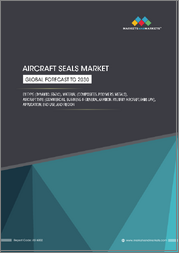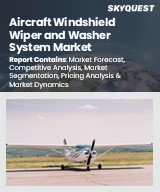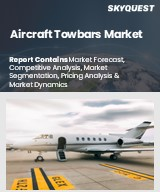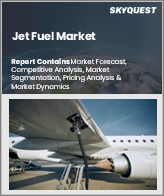
|
시장보고서
상품코드
1693567
미국의 군용기 시장 : 점유율 분석, 산업 동향 및 통계, 성장 예측(2025-2030년)US Military Aviation - Market Share Analysis, Industry Trends & Statistics, Growth Forecasts (2025 - 2030) |
||||||
미국의 군용기 시장 규모는 2025년 248억 달러로 추정되고, 2030년에는 313억 4,000만 달러에 이를 것으로 예상되며, 예측 기간 중(2025-2030년) CAGR 4.79%를 나타낼 것으로 예측됩니다.

국방예산 증가와 거액 항공기 조달이 시장을 견인
- 중국과 미국은 미래의 전쟁에 대비하기 위해 신기술의 연구 개발에 점점 힘을 쏟고 있으며, 양국의 기술 경쟁은 가속화되고 있습니다.
- 방위 예산의 대부분은 F-35 제트기, B-21 레이더 폭격기, KC-46A Pegasus 탱커, 기타 헬리콥터에 할당되어 있습니다. 2022년, 공군은 C-130 항공기의 총 플리트를 삭감해, 약 92기의 C-130 항공기를 업그레이드할 계획이었습니다. 미국 공군은 신형기 C-130J를 위해 구형기를 퇴역시킬 계획입니다.
- 2023년부터 2029년까지 현재 진행 중 및 미래의 일부 조달 계획이 이 나라의 군용 헬리콥터 시장을 견인할 것으로 예상됩니다.
미국 군용기 시장 동향
국방비 증가는 미국이 직면한 다양한 지정학적 위협에 기인합니다.
- 2022년 미국은 세계 국방비 군사비의 39%를 차지했으며 2022년에는 8,770억 달러(0.7%) 증가했습니다. 그 개요에 따르면, 2023년도의 예산 요구는 약 1,940억 달러로, 2022년도의 요구로부터 202억 달러(11.7%) 증가했습니다. 2023년도의 취득자금(조달과 연구개발, 시험 및 평가(RDT&E))으로서 2,760억 달러를 제안하고 있으며, 내역은 조달이 1,459억 달러, RDT&E가 1,301억 달러로 되어 있습니다.
- 요구액 2,760억 달러 중 565억 달러(연구개발비 168억 달러, 조달비 396억 달러)는 항공기의 연구개발, 항공기 취득, 초기 예비품, 항공기 지원 장비품 등의 항공기 및 관련 시스템에 충당됩니다. 가장 고액인 방위계획인 제5세대 F-35 통합타격전투기(JSF)는 해군(F-35C), 해병대(F-35B&C), 공군(F-35A)용 61기에 대해 110억 달러의 요구가 있습니다. 2023년도의 예산에는 24기의 F-15EX, 79기의 병수 지원기, 119기의 회전익 항공기, 12기의 UAV/UAS의 구입도 포함되어 있습니다.
- 미국 육군의 2022년도 예산 요구는 1,730억 달러, 해군은 2,120억 달러, 공군은 2,130억 달러였습니다. 전투기(230억 달러), 화물기(50억 달러), 지원기(16억 달러)로 나머지는 UAS, 항공기 지원, 기술 개발, 항공기 개조 예산입니다.
함대의 근대화와 근대전의 확대가 이 나라의 현역 함대 강화의 원동력이 되고 있습니다.
- 미국 공군(USAF)은 현대전의 요구에 부응하기 위해 차세대 항공기의 개발과 조달을 계속하고 있습니다. 신형기의 투입으로 보유체의 노후화가 지연되고 있습니다. 향후 보유수의 추가 감소가 예상됩니다. 몇 안되는 항공기의 평균기령은 폭격기가 45년, 탱커가 39년, 헬리콥터가 32년, 전투기 및 공격기가 29년으로 높습니다. 그러나 공군은 노후화와 대체기의 취득의 늦은 점에서 훨씬 나쁜 상황에 있습니다. 2022년 12월 현재 미국은 세계 최대의 군용기 보유국이며 합계 13,300대를 운용하고 있습니다. 이 함대의 상당한 부분이 전투 헬리콥터(42%)와 전투기(21%)로 차지되고 있습니다. 한편, 훈련기와 헬리콥터는 20%를 차지하고, 수송기는 불과 7%에 불과합니다. 한편, 유조선과 특수 임무기는 각각 5%를 차지하고 있습니다.
- 2023년도에 대해 미국 공군은 A-10 21기, F-22 33기, E-8 8기, E-3 Sentries 15기, C-130H Hercules 10기, T-1 Jayhawks 50기, KC-135 탱커 13기 등 최대 150대를 퇴역할 허가를 의회에 요구했습니다. 미 공군은 2023년에 33기의 F-35A를 구입할 계획으로, 2022년도에 미 공군이 요구한 48기보다 적습니다.
미국 군용기 산업 개요
미국의 군용기 시장은 상당히 통합되어 있으며 상위 5개사에서 98.65%를 차지하고 있습니다. 시장 주요 기업은 Airbus SE, Lockheed Martin Corporation, Northrop Grumman Corporation, Textron Inc., The Boeing Company입니다(알파벳순).
기타 혜택
- 엑셀 형식 시장 예측(ME) 시트
- 3개월의 애널리스트 서포트
목차
제1장 주요 요약과 주요 조사 결과
제2장 보고서 제안
제3장 소개
- 조사의 전제조건과 시장 정의
- 조사 범위
- 조사 방법
제4장 주요 산업 동향
- 국내총생산
- 액티브 플릿 데이터
- 국방 지출
- 규제 프레임워크
- 밸류체인 분석
제5장 시장 세분화
- 서브 항공기 유형
- 고정익기
- 멀티롤 항공기
- 훈련용 항공기
- 수송기
- 기타
- 회전익기
- 멀티미션 헬리콥터
- 수송용 헬리콥터
- 기타
- 고정익기
제6장 경쟁 구도
- 주요 전략적 움직임
- 시장 점유율 분석
- 기업 상황
- 기업 프로파일
- Airbus SE
- Leonardo SpA
- Lockheed Martin Corporation
- Northrop Grumman Corporation
- Textron Inc.
- The Boeing Company
제7장 CEO에 대한 주요 전략적 질문
제8장 부록
- 세계 개요
- 개요
- Porter's Five Forces 분석 프레임워크
- 세계의 밸류체인 분석
- 시장 역학(DROs)
- 정보원과 참고문헌
- 도표 일람
- 주요 인사이트
- 데이터 팩
- 용어집
The US Military Aviation Market size is estimated at 24.8 billion USD in 2025, and is expected to reach 31.34 billion USD by 2030, growing at a CAGR of 4.79% during the forecast period (2025-2030).
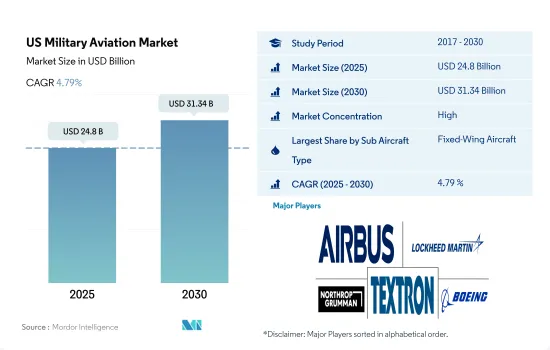
Rising defense budgets and huge aircraft procurement are driving the market
- Competition in technology between China and the United States is accelerating as both countries are increasingly focused on the R&D of emerging technologies to prepare for future warfare. In 2022, the United States accounted for 39% of global defense military spending, which increased by USD 877 billion in 2022, or 0.7%. The total includes military assistance to Ukraine, estimated at USD 19.9 billion. In 2022, the country released the Department of the Air Force budget, which outlined the budget request for FY 2023 at approximately USD 194.0 billion.
- A significant portion of the defense budget is allocated for F-35 jets, B-21 Raider bombers, KC-46A Pegasus tankers, and other helicopters. Some of these new aircraft will replace the existing fleet that has been operational for over 50 years. In 2022, the Air Force planned to cut down the total fleet of C-130 aircraft and upgrade about 92 C-130 aircraft. The US Air Force plans to retire the older models for the new C-130J aircraft fleet. By the end of 2022, the United States received 47 F-35s, with outstanding deliveries for 1,943 aircraft expected during the forecast period.
- Several ongoing and future procurement programs of the country are expected to drive its military helicopter market during 2023-2029. In March 2023, Boeing announced that the US Army had awarded a contract to build new AH-64E Apache Guardian attack helicopters under a USD 1.95 billion four-year order. In September 2018, the US Air Force (USAF) selected the MH-139 to replace its fleet of UH-1N Huey helicopters. As of December 2022, nine helicopters were delivered, with the rest of the deliveries expected during the forecast period. During the forecast period, a total of 2,330 aircraft are expected to be procured by the country.
US Military Aviation Market Trends
The increase in defense spending can be attributed to the various geopolitical threats faced by the US
- In 2022, the US accounted for 39% of global defense spending military spending, which increased by USD 877 billion in 2022, or 0.7%. In 2022, the US released the Department of the Air Force budget, which outlined that for FY 2023, the budget request was approximately USD 194.0 billion, a USD 20.2 billion or 11.7% increase from the FY 2022 request. The US DoD proposed USD 276.0 billion in acquisition funds for FY2023 (Procurement and Research, Development, Test, and Evaluation (RDT&E)), which comprised USD 145.9 billion for Procurement and USD 130.1 billion for RDT&E. The financing requested in the budget is a balanced portfolio approach to implementing the National Defense Strategy recommendations.
- Of the USD 276 billion in the request, USD 56.5 billion (USD 16.8 billion for RDT&E and USD 39.6 billion for Procurement) will finance aircraft and related systems, including money for aircraft R&D, aircraft acquisition, initial spares, and aircraft support equipment. The single most expensive defense program, the fifth generation F-35 Joint Strike Fighter (JSF), has USD 11.0 billion in requests for 61 aircraft for the Navy (F-35C), Marine Corps (F-35B & C), and Air Force (F-35A). Funding for FY 2023 also included the purchase of 24 F-15EX, 79 logistics and support aircraft, 119 rotary wing aircraft, and 12 UAV/UAS.
- The US Army's budget request for FY 2022 was USD 173 billion, the Navy's was USD 212 billion, and the Air Force's request was USD 213 billion. The aircraft and related systems category includes the following subgroups: Combat Aircraft (USD 23.0 billion), Cargo Aircraft (USD 5.0 billion), Support Aircraft (USD 1.6 billion), with the remaining budget for UAS, aircraft support, technology development, and aircraft modifications.
Fleet modernization and growing modern warfare are the driving factors for the country's active fleet enhancement
- The US Air Force (USAF) continues to develop and procure next-generation aircraft to meet the demands of modern warfare. Fielding of new aircraft has slowed the increase in fleet age. The US Air Force is not buying enough new aircraft to sustain its force structure at its current size. A further decrease in fleet size is likely to be witnessed in the future. The average age of a few aircraft is high, at 45 years for bombers, 49 years for tankers, 32 years for helicopters, 32 years for trainers, and 29 years for fighter/attack aircraft. The Navy and the Army also face challenges with aging aircraft and maintaining their fleets. However, the Air Force is in far worse shape in terms of aging and the slow acquisition of replacements. As of December 2022, the United States had the biggest fleet of military aircraft in the world, with a total of 13,300 operational planes. A considerable chunk of this fleet is made up of combat helicopters (42%) and combat planes (21%). In contrast, training planes and helicopters account for 20%, while transport planes make up only 7%. Meanwhile, tankers and special mission aircraft each represent 5% of the fleet.
- For FY2023, the US Air Force asked for permission from Congress to retire up to 150 aircraft, including 21 A-10, 33 F-22, 8 E-8, 15 E-3 Sentries, 10 C-130H Hercules, 50 T-1 Jayhawks, and 13 KC-135 tankers. The USAF also trimmed its F-35A purchases to free up funds to develop Next Generation Air Dominance (NGAD) and roll out the F-15EX. The USAF plans to buy 33 F-35As in 2023, fewer than the 48 the service asked for in FY2022. With the dynamic nature of modern warfare, the United States aims to maintain a smaller fleet of effective aircraft, which may significantly reduce the overall fleet size during the forecast period.
US Military Aviation Industry Overview
The US Military Aviation Market is fairly consolidated, with the top five companies occupying 98.65%. The major players in this market are Airbus SE, Lockheed Martin Corporation, Northrop Grumman Corporation, Textron Inc. and The Boeing Company (sorted alphabetically).
Additional Benefits:
- The market estimate (ME) sheet in Excel format
- 3 months of analyst support
TABLE OF CONTENTS
1 EXECUTIVE SUMMARY & KEY FINDINGS
2 REPORT OFFERS
3 INTRODUCTION
- 3.1 Study Assumptions & Market Definition
- 3.2 Scope of the Study
- 3.3 Research Methodology
4 KEY INDUSTRY TRENDS
- 4.1 Gross Domestic Product
- 4.2 Active Fleet Data
- 4.3 Defense Spending
- 4.4 Regulatory Framework
- 4.5 Value Chain Analysis
5 MARKET SEGMENTATION (includes market size in Value in USD and Volume, Forecasts up to 2030 and analysis of growth prospects)
- 5.1 Sub Aircraft Type
- 5.1.1 Fixed-Wing Aircraft
- 5.1.1.1 Multi-Role Aircraft
- 5.1.1.2 Training Aircraft
- 5.1.1.3 Transport Aircraft
- 5.1.1.4 Others
- 5.1.2 Rotorcraft
- 5.1.2.1 Multi-Mission Helicopter
- 5.1.2.2 Transport Helicopter
- 5.1.2.3 Others
- 5.1.1 Fixed-Wing Aircraft
6 COMPETITIVE LANDSCAPE
- 6.1 Key Strategic Moves
- 6.2 Market Share Analysis
- 6.3 Company Landscape
- 6.4 Company Profiles
- 6.4.1 Airbus SE
- 6.4.2 Leonardo S.p.A
- 6.4.3 Lockheed Martin Corporation
- 6.4.4 Northrop Grumman Corporation
- 6.4.5 Textron Inc.
- 6.4.6 The Boeing Company
7 KEY STRATEGIC QUESTIONS FOR AVIATION CEOS
8 APPENDIX
- 8.1 Global Overview
- 8.1.1 Overview
- 8.1.2 Porter's Five Forces Framework
- 8.1.3 Global Value Chain Analysis
- 8.1.4 Market Dynamics (DROs)
- 8.2 Sources & References
- 8.3 List of Tables & Figures
- 8.4 Primary Insights
- 8.5 Data Pack
- 8.6 Glossary of Terms




